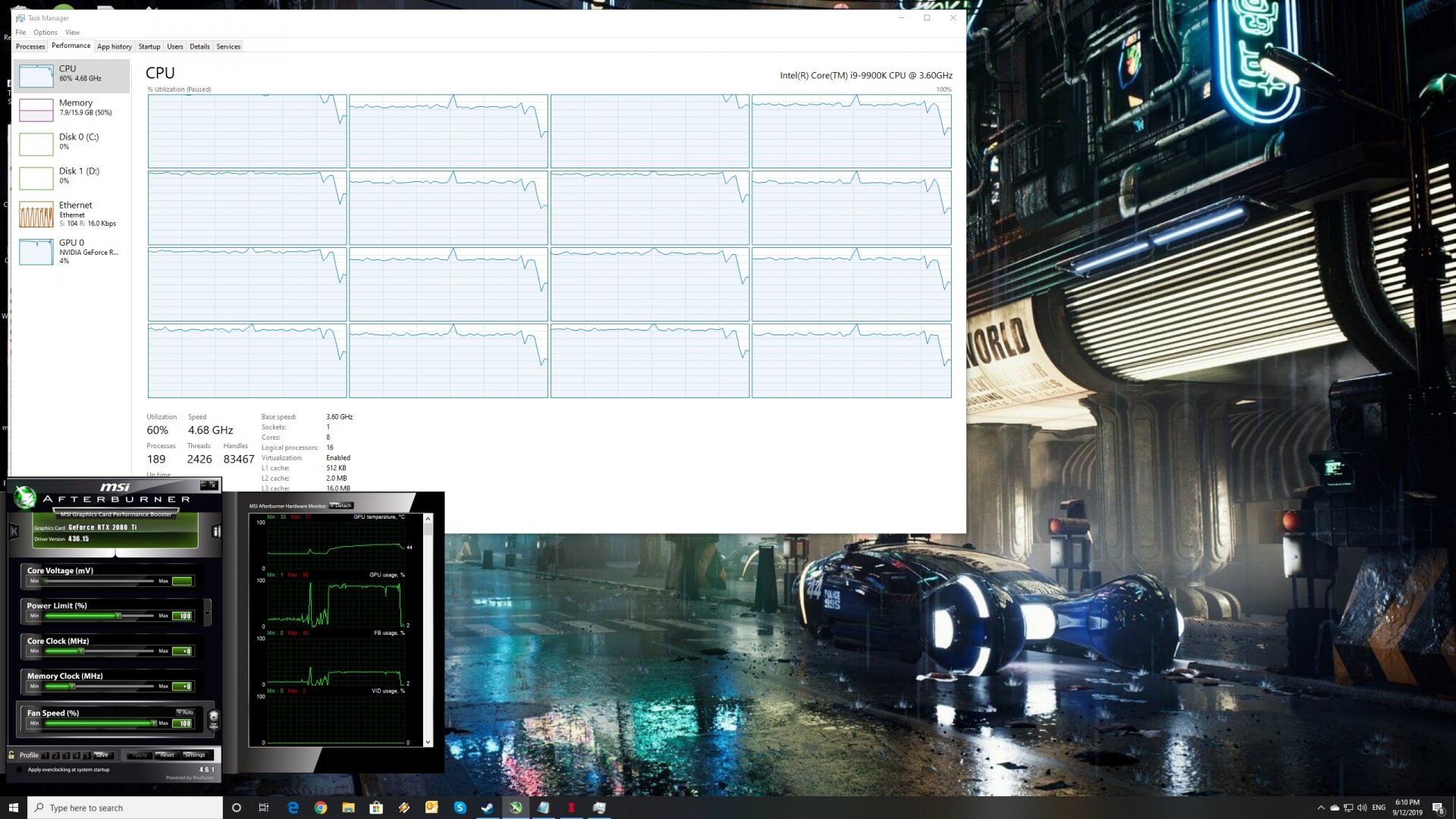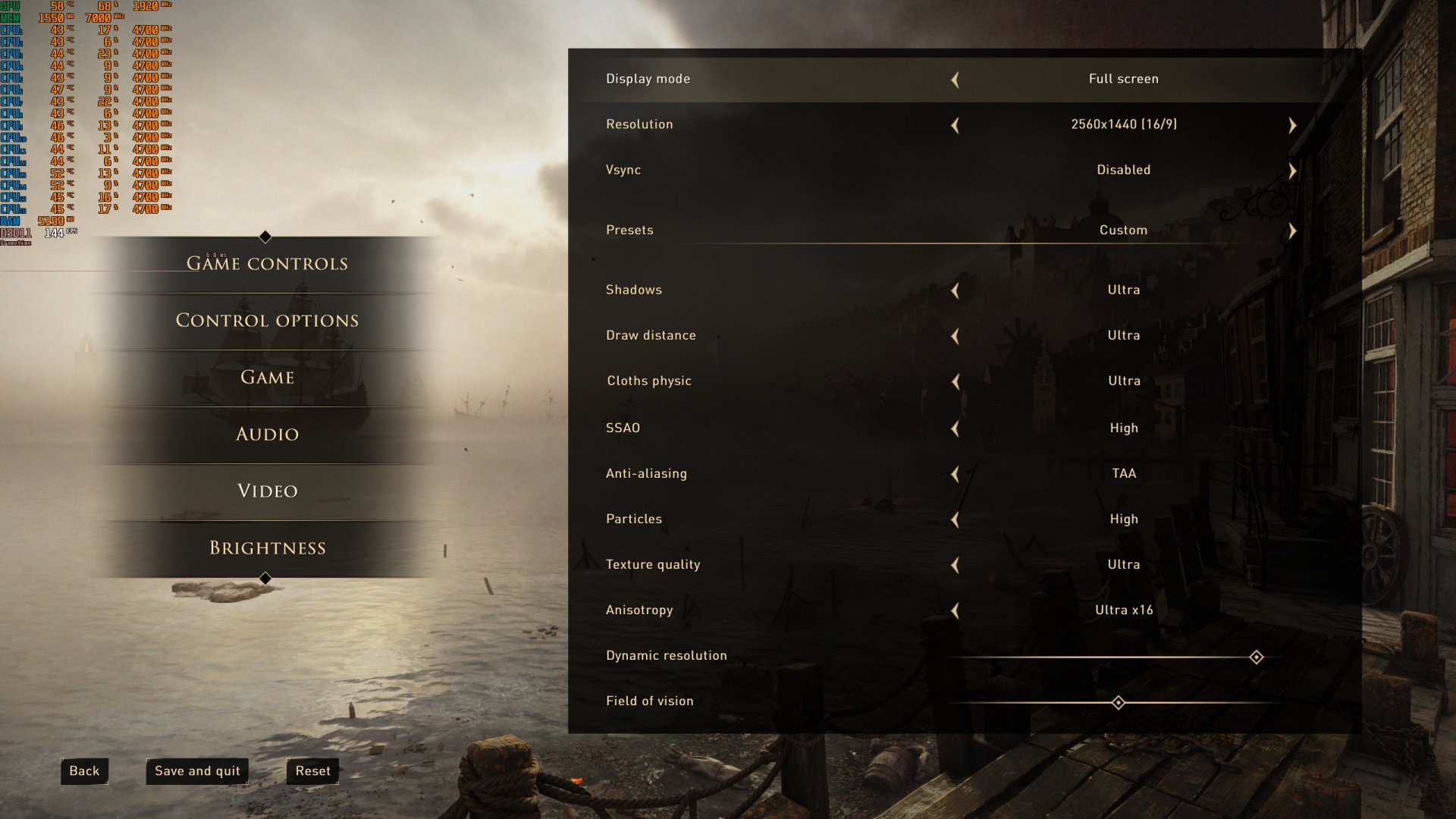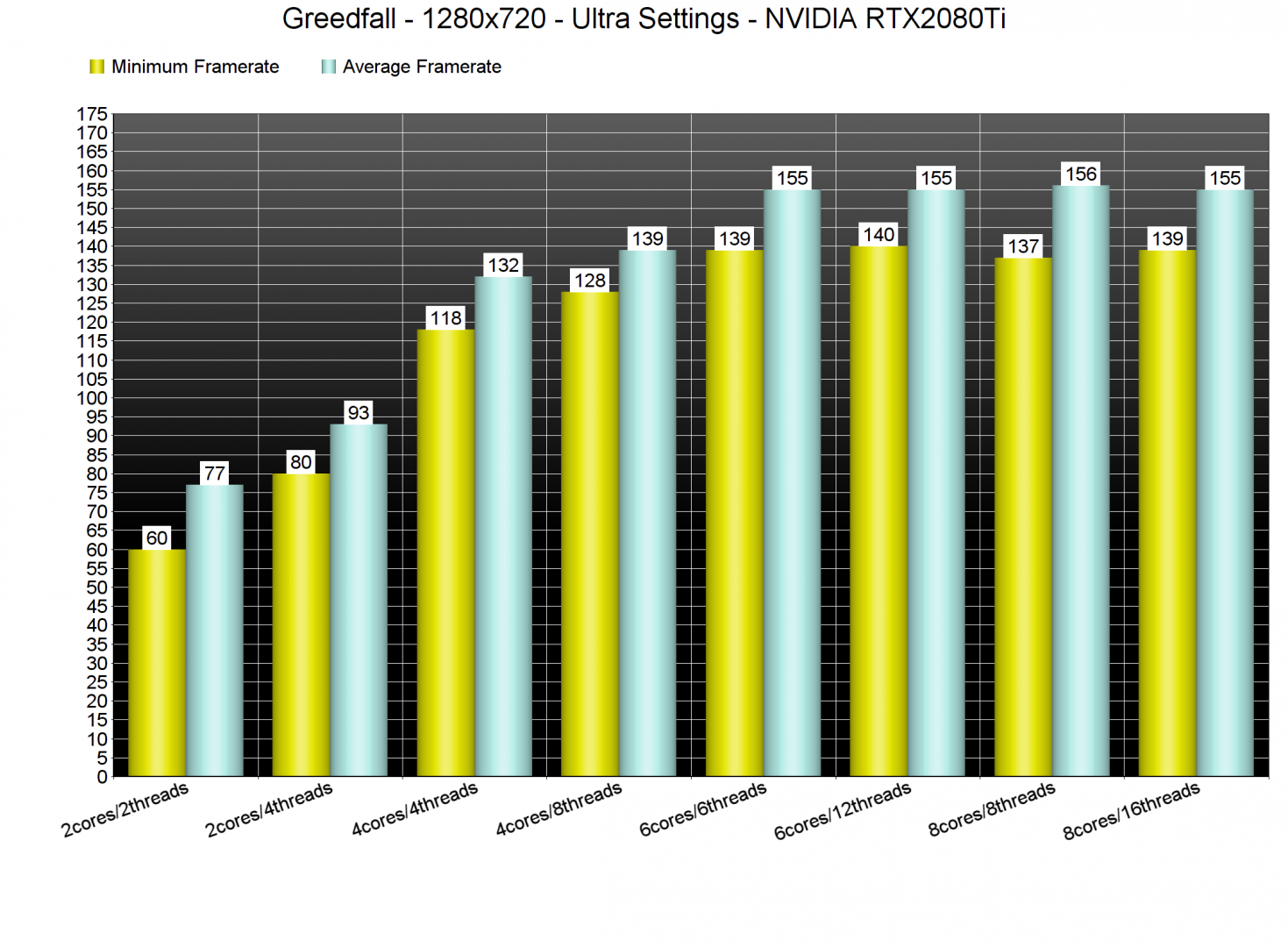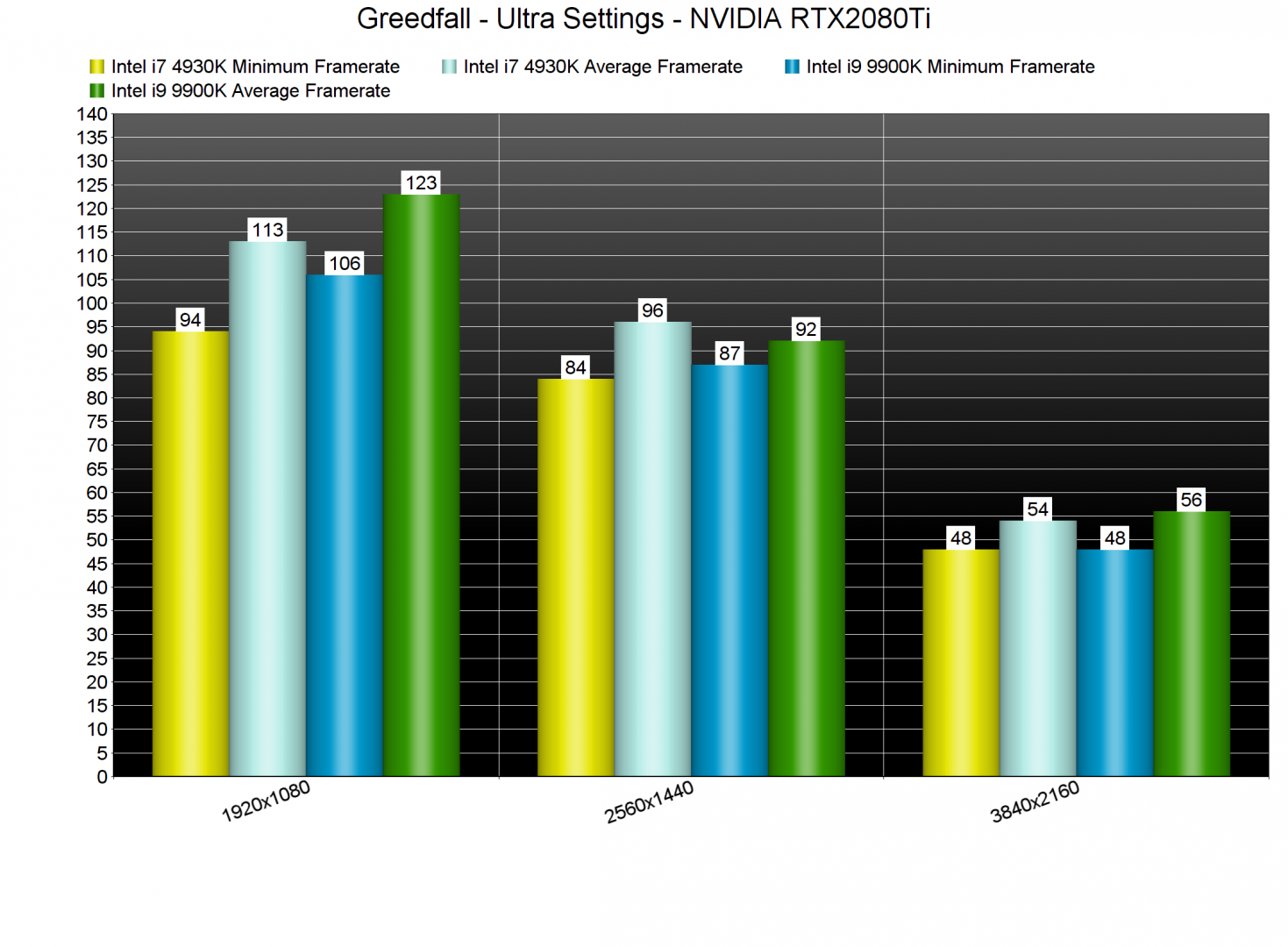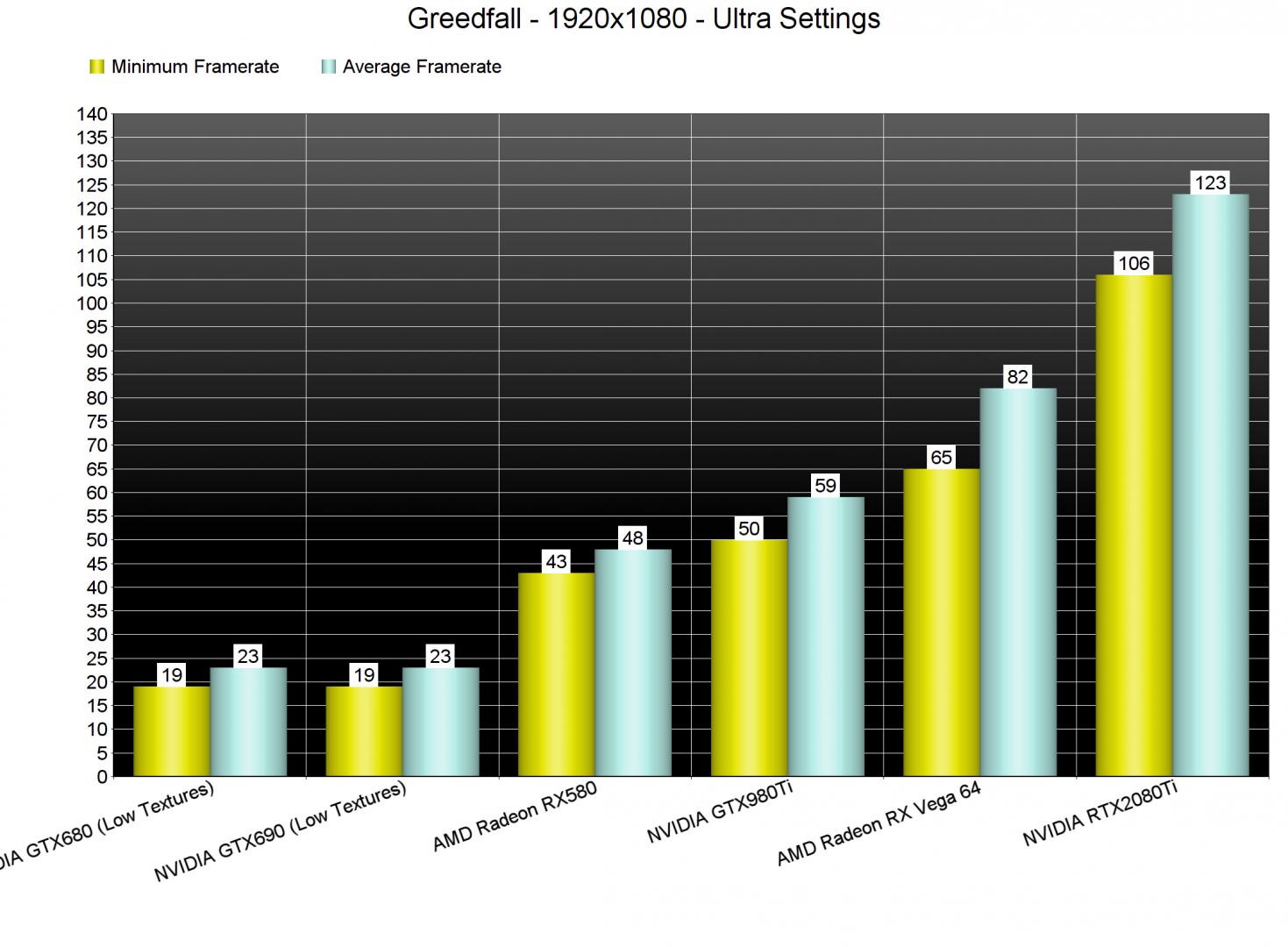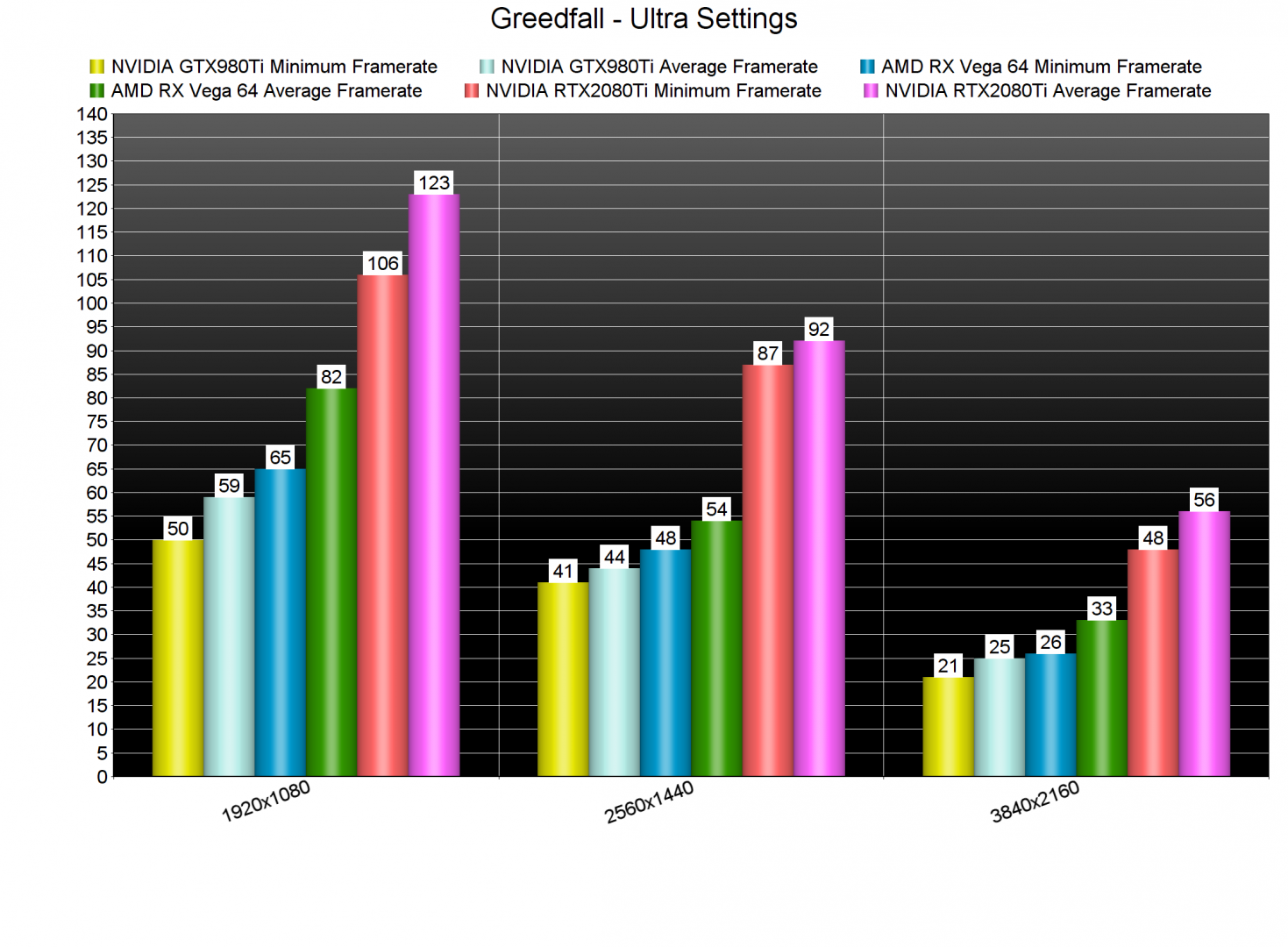Greedfall is a double-A game that a lot of PC RPG fans have been looking forward to. The game uses an upgraded version of the Spiders Engine so it’s time to benchmark it and see how it performs on the PC platform.
For this PC Performance Analysis, we used an Intel i9 9900K with 16GB of DDR4 at 3600Mhz, AMD’s Radeon RX580 and RX Vega 64, NVIDIA’s RTX 2080Ti, GTX980Ti and GTX690. We also used Windows 10 64-bit, the GeForce driver 436.30 and the Radeon Software Adrenalin 2019 Edition 19.9.1 drivers. NVIDIA has not included any SLI profile for this title, meaning that our GTX690 performed similarly to a single GTX680.
Spiders has included a few graphics settings to tweak. PC gamers can adjust the quality of Shadows, Draw Distance, Cloths Physics and SSAO. There are also options for Anti-aliasing, Particles, Textures and Anisotropy. The game also offers a Dynamic Resolution scaler, as well as a Field of View slider.
In order to find out how the game scales on multiple CPU threads, we simulated a dual-core, a quad-core and a hexa-core CPU. Since the game does not come with a built-in benchmark tool, we tested the first city (after the prologue). This area appeared to be really demanding, so think of our results as stress tests. We also lowered our resolution to 720p (for our CPU benchmarks) in order to avoid any possible GPU limitations.
While the game only uses DX11, it can scale on more than ten CPU threads. However, we did not find any performance differences between our simulated hexa-core and our eight-core systems. Our simulated quad-core system saw a noticeable performance decreases, as did our simulated dual-core system. Still, all of our systems were able to run the game with more than 60fps.
Even though Greedfall does not require a high-end CPU, it does suffer from some awful stuttering issues. Below you can find a screenshot that showcases these issues. Pay close attention to the frametime graph which reveals the game’s annoying stuttering issues. These issues were more apparent on AMD’s hardware, in which the game was sometimes completely unplayable. On NVIDIA’s hardware, and thanks to G-Sync, things were way better.
We’ve also benchmarked Greedfall on our older Intel i7 4930K. At 1080p, we were slightly bottlenecked by our system (mostly due to memory frequency limitations). At 1440p and in 4K we did not experience any performance differences between our i7 4930K and our i9 9900K.
Contrary to its light CPU requirements, Greedfall requires a powerful GPU. Our AMD Radeon RX580 and NVIDIA GTX980Ti were unable to offer a smooth gaming experience at 1080p/Ultra settings. Yeap, you read that right; Greedfall cannot run with 60fps at 1080p on a freaking NVIDIA GTX980Ti.
At 2560×1440, our AMD Radeon RX Vega 64 was able to push a minimum of 48fps and an average of 54fps. Therefore, the only GPU that was able to offer a smooth gaming experience was the NVIDIA GeForce RTX2080Ti. As for 4K, NVIDIA’s most powerful graphics card was unable to offer a constant 60fps experience. Again, we should keep in mind that these are stress tests, meaning that other areas will run smoother than it.
Graphics wise, Greedfall looks good but it does not really justify its enormous GPU requirements. The game looks and runs worse than Gears 5 for example. There are some cool lighting effects, however the lip-syncing in this game is not good at all. To its defense, Spiders is a small studio and cannot compete with the likes of The Coalition or even Remedy. Still, it’s pretty obvious that the game is in dire need of additional optimization.
All in all, Greedfall is mostly a GPU-bound title. The game does not require a high-end CPU and will run fine on older CPUs. However, PC gamers will need powerful graphics card in order to run the game even at 1080p/Ultra settings. Furthermore, the game’s visuals do not justify these huge GPU requirements. Not only that, but the game suffers from some major stuttering issues that can be really annoying, especially if you are not equipped with a G-Sync monitor.
Enjoy!
John is the founder and Editor in Chief at DSOGaming. He is a PC gaming fan and highly supports the modding and indie communities. Before creating DSOGaming, John worked on numerous gaming websites. While he is a die-hard PC gamer, his gaming roots can be found on consoles. John loved – and still does – the 16-bit consoles, and considers SNES to be one of the best consoles. Still, the PC platform won him over consoles. That was mainly due to 3DFX and its iconic dedicated 3D accelerator graphics card, Voodoo 2. John has also written a higher degree thesis on the “The Evolution of PC graphics cards.”
Contact: Email


